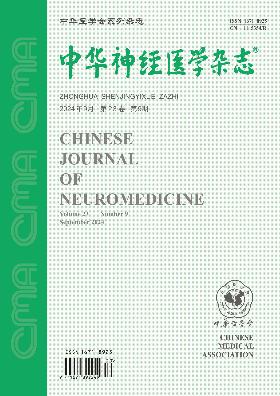Anterior two-thirds or complete corpus callosotomy for treatment of medically drug-resistant epilepsy
Q4 Medicine
引用次数: 0
Abstract
Objective To investigate the extents of corpus callosotomy (CC) resulting in optimal seizure control and compare the efficacies and complications of two CC approaches. Methods Clinical data of 25 patients underwent CC in our hospital from January 2013 to December 2018 were retrospectively analyzed. All 25 patients were diagnosed as having medically refractory epilepsy, and 27 CC procedures were performed. The patients underwent either anterior two thirds CC (n=13) or single-stage complete CC (n=12). Two patients had a second-stage posterior CC in 61 and 36 months after anterior CC, respectively. The efficacies were studied by using two evaluation indexes, the effective rate (worthwhile improvements) and the markedly effective rate (favorable outcomes). Results The average postoperative follow-up time was 2.6 years. In comparison, the markedly effective rate (>75% reduction in seizure frequency or severity) was 71.4% after complete CC and 15.4% after anterior two thirds CC with a statistical significant difference between the two groups (P 50% reduction in seizure frequency or severity) of complete CC (78.6%) was higher than that of anterior two thirds CC (53.8%), but without significant difference (P>0.05). Overall, 66.7% of patients benefited from anterior or complete CC. There were no such complications as intracranial hemorrhage, hydrocephalus, cerebrospinal fluid leakage or postoperative infection. Conclusion Complete CC is more effective for seizure control than anterior two thirds CC; no permanent neurological deficits are observed postoperatively. Key words: Drug-resistant epilepsy; Anterior callosotomy; One-stage total callosotomy前三分之二或完全胼胝体切开术治疗药物耐药性癫痫
目的探讨胼胝体切开术(CC)对癫痫发作的最佳控制程度,并比较两种方法的疗效和并发症。方法回顾性分析我院2013年1月至2018年12月收治的25例CC患者的临床资料。所有25例患者均被诊断为医学上难治性癫痫,并进行了27例CC手术。患者接受了前路三分之二CC (n=13)或单期完全CC (n=12)。两名患者分别在前路CC后61个月和36个月发生了二期后路CC。采用有效率(值得改善)和显著有效率(预后良好)两项评价指标对疗效进行研究。结果术后平均随访时间为2.6年。完全CC组(78.6%)明显高于前2 / 3 CC组(53.8%),两组间差异有统计学意义(P < 0.05),两组间差异无统计学意义(P < 0.05),两组间差异有统计学意义(P < 50%)。总体而言,66.7%的患者受益于前路或完全CC,无颅内出血、脑积水、脑脊液漏或术后感染等并发症。结论完全CC比前三分之二CC更有效地控制癫痫发作;术后未见永久性神经功能缺损。关键词:耐药癫痫;前callosotomy;一期全胼胝体切开术
本文章由计算机程序翻译,如有差异,请以英文原文为准。
求助全文
约1分钟内获得全文
求助全文
来源期刊

中华神经医学杂志
Psychology-Neuropsychology and Physiological Psychology
CiteScore
0.30
自引率
0.00%
发文量
6272
期刊介绍:
 求助内容:
求助内容: 应助结果提醒方式:
应助结果提醒方式:


